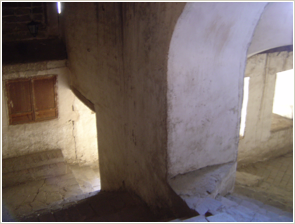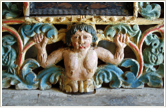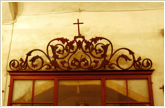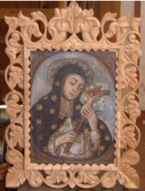
Convento Museo de Santa Teresa


In 1724, the Crespo family of Cochabamba donated land to the church. In 1753, a royal decree from the king of Spain authorized Archbishop Molleda to found a convent on that land, to be entered by young women of privilege and nobility. Seven years later, four nuns arrived from Sucre to start the convent.
To house them, the Italian architect Santiago Cambiazzo designed a bold, elliptically-shaped building, the only such Italian style, poly-lobed foundation in all of Latin America. Cambiazzo’s daring design proved too ambitious for the technology of the period, and he was unable to erect a roof for his curving, baroque walls.
Although a temporary building had been erected to house the nuns, the sisters of the new convent were without a church, until the bishop Antonio de San Alberto and a local architect from nearby Tarata proposed a solution: to build a second church within the walls of the first.
Thus was the Convent of Santa Teresa’s whimsical structure conceived; it remains a bold creation that defies the passage of time and looks toward the future.


Nada te turbe, nada te espante,...
Dios no se muda...
la paciencia todo lo alcanza.
Quien a Dios tiene,
nada le falta
—Santa Teresa de Avila
History
Historia
Fue en el año 1724 que la familia Crespo de Cochabamba donó terreno para la construcción de un convento. En 1753, sale la cédula real del rey de España, dando permiso al Arzobizpo Molleda para fundar un convento que solo podrían asistir aquellas jóvenes de condición privilegiada y de noble cuna. Siete años despues, llegan cuatro religiosas de Sucre.
Para recibirlas se propuso la construcción de un complejo diseñado por un arquitecto italiano: Santiago Cambiazzo, una atrevida construcción barroca de movimiento inusual y forma elíptica. Seria la única iglesia de planta polilobular barroca en toda latino américa.
La construcción denominada Cambiazzo debido al nombre de su autor, no llegó a completarse, porque tras haber hecho los muros el arquitecto se dio cuenta de que no podía techar la forma barroca con la tecnología de la época.
Las religiosas se ven sin iglesia hasta que el obispo Fray Antonio de San Alberto y el parroco arquitecto de Tarata de apellido Nogales proponen una solución, la de construir una iglesia dentro de la otra. Es así como nace este capricho de la arquitectura.. una temeraria construcción que desafía al tiempo y se atreve a mirar el futuro.





Nothing must disturb you, nothing frighten you...
God is unchanging....
with patience, all can be accomplished.
Whosoever has God, needs nothing more.
—Santa Teresa
of Avila


